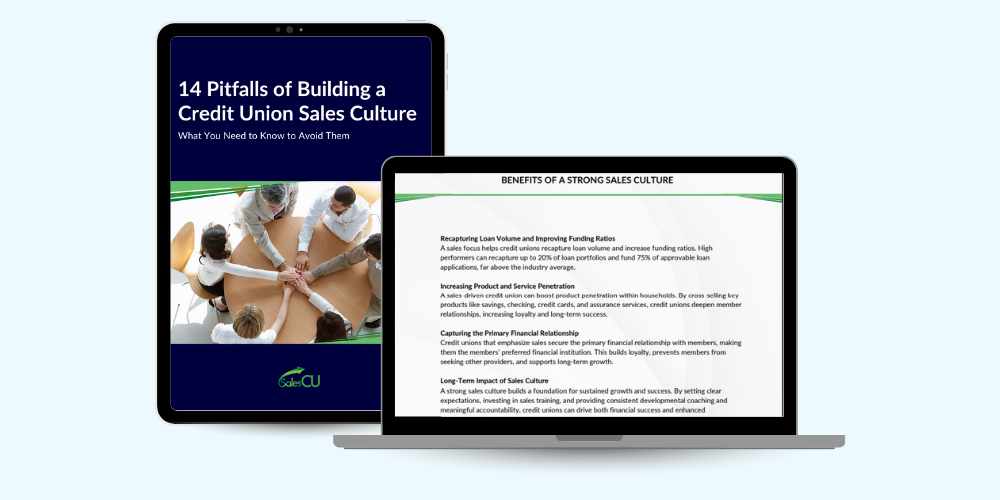What separates your credit union from your competitors? We’re not talking about the competencies and differentiators in your strategic plan. What is the real, experienceable, and sustainable difference between you and the other credit unions and traditional financial institutions with which you compete?
Here’s a clue. It isn’t your products or services. Those are largely the same, and any difference you have today can be easily replicated. There might be a geographic advantage, but again, that can be copied in a digital world. I, for example, reside in Texas and have a credit union membership in another state.
The assumption behind the question is evident in the title of this article. A high-performing culture where every person at every level is fully invested, equipped, and optimized to advancing your mission and achieving your vision is your only sustainable competitive advantage.
How to spot a high-performing culture
The number of definitions of a high-performing culture—like the universe—is ever expanding to infinity. A better approach is to look for the consistent markers present over time. Here are seven we’ve seen in over 30 years of research and work:
- A shared set of organizational beliefs, assumptions, and values that guide decisions and actions. Everyone acknowledges the importance of shared values in the context of culture, but beliefs and assumptions are equally crucial.
- The consistent achievement of desired results. Results rule, and high-performing cultures take immense pride in delivering them.
- People do what they say they will do. Accountability and integrity extend to organization-wide ownership of actions and outcomes.
- Mutual respect, collaboration, and a high degree of trust form the foundation of all relationships. People feel safe and are encouraged to bring their best selves to work.
- Alignment of goals and strategic objectives with the mission, vision, and values. Line of sight between daily actions and strategic objectives minimizes wasted effort. Most importantly, it sharpens the focus of decisions.
- Continuous improvement, learning, and innovation are expected, funded, and celebrated. High-performing cultures know that past success proves you were once right. They relish the opportunity to grow and compete against the best-of-the-best in their industry.
- The environment attracts, retains, and grows top talent. World-class talent always has a choice about where they work. The culture must make it easy for top performers to choose you. It also must continually develop and grow talent to sustain its performance.
The x-factor of a high-performing culture
There is an additional factor that distinguishes the highest-performing cultures from the rest—the consistency of habit that results from intentionality. They have transformed the seven markers, which aren’t revolutionary, into habits.
Charles Duhigg wrote about Tony Dungy in his book The Power of Habit. Dungy, a former NFL coach, focused his efforts on ingraining a small number of crucial habits in his team rather than overcomplicating the game. He said, “Champions don’t do extraordinary things. They do ordinary things, but they do them without thinking, too fast for the other team to react. They follow the habits they’ve learned.”
The habit—culture connection
You can’t choose if there is a culture. You can, however, choose the habits you want to build. Here is how it works:
- Choice—what we think is important—drives action. Shared values, beliefs, and assumptions work together to guide priorities, performance, and behavior. The impact of beliefs and assumptions explains why organizations with the same stated values make different decisions.
- Consistent action becomes habit. We can speed up habit formation in our organizations through systems, structures, rewards, and consequences. In fact, these drivers of habit formation work incredibly well even if they are out of sync with the stated mission, vision, values, and goals.
- Habits—more than anything displayed on the walls or talked about in a leader’s communication—define our culture.
For instance, a performance management process that emphasizes call handling time has a greater impact on the culture experienced by members than any statement about your belief in service to members.
Choices, then, become critical to developing high-performing habits that allow you to do ordinary things faster and better than competitors.
The seven power habits
Our research and experience working with hundreds of organizations have identified the following seven choices that become high-performing habits and define the culture.
High-performing cultures:
- Tell themselves the truth. They value candor and honesty. This habit promotes transparency and creates focus. High-performing cultures don’t kid themselves about the realities of their environment and performance. They can solve problems quicker because they do not waste time telling each other what they think they want to hear.
- Pursue the best over the easiest. Cultures with this habit do not use words such as “we are above average” or “we aren’t as bad as others.” They evaluate themselves against the expectation of excellence in every area of the operation.
- Focus their energy to make the main things the main thing. Cultures with this habit are not easily distracted. They are relentless about delivering on the critical metrics related to success with each of the constituent groups they serve.
- Leverage the power of partnerships to create caring and connection. Strong relationships are not enough. They want to earn the right to be considered a partner with members and associates.
- Show the courage of accountability. Accountability is ultimately about ownership. This habit promotes ownership individual and group performance, results, perceptions, and relationships.
- Continuously grow, learn, innovate, and adapt. This habit extends beyond recognizing the obligation of learning, change, and growth. It is evident in abundant curiosity and a thirst to be better.
- Refuse to be defined by circumstances or failure. Some people call this resilience or grit. The label is less important than what is observed in the culture. It shows up in never being satisfied with less than their best and always being anxious to be better.
Start here
Here are five things you can begin right now to create and sustain your high-performing culture.
- Make the culture about the business.You want to have a great, fun place to work. But fun without results isn’t a business. It’s a party. Greg Besner, founder and CEO of CultureIQ, says that “Employee engagement is a crucial piece of a successful culture, but it is only one component. Operational dimensions such as mission and value alignment, innovation, responsibility, teamwork, and open communication are equally important for creating a sustainable business.”
- Don’t delegate ownership of the culture to HR or a Culture Committee.Everyone (but especially the leaders) is responsible for nurturing and advancing the culture. Human Resources or a culture committee can be the conscience of the culture. They can also help you implement the process of culture change. They cannot, however, be the owner.
- Pay special attention to the middle. The middle of your organization is where change goes to die. Supervisors and managers are often the most ignored group when it comes to culture change. We rely on them to create a culture that they do not see in their own experience. Also, supervisors and managers have reached their position in the organization by playing a game that you are now changing. Ignore them at your peril.
- Use all the levers at your disposal. Education and training are not enough. Structures, systems, and processes are the tools that drive tangible change. Your leaders do not need, for example, another session on the importance of recognition. They need a way to make showing appreciation important. Consider these as a starting point: hiring, on-boarding, performance management, disciplinary actions, promotions, terminations, compensation, and work rules.
- Don’t forget to think about your future.You will, at some point, look back on today’s pace of change, disruption, and complexity as the “good old days.” Your culture must anticipate needs that you and your team may not fully recognize today. Most important, you must close the gaps between the culture you have and the one that you need in the world as it will be.
The culture always wins is not a cliché. It is a critical business reality in a world where the only sustainable competitive advantage is the habits experienced by your members and associates every day.







